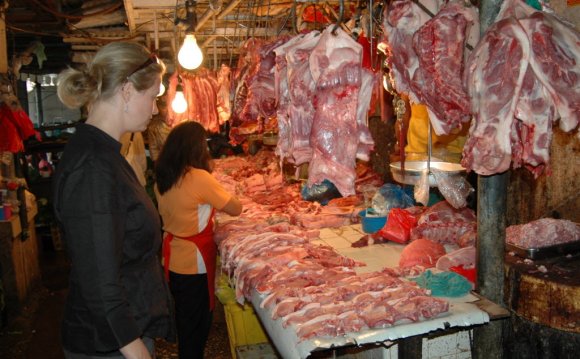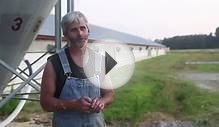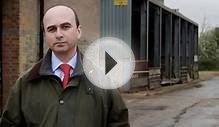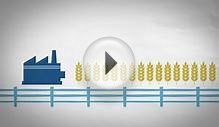
Giant livestock farms, which can house hundreds of thousands of pigs, chickens, or cows, produce vast amounts of manure, often generating the waste equivalent of a small city. A problem of this nature and scale is tough to imagine, and pollution from livestock farms seriously threatens humans, fish and ecosystems. Below are facts and statistics that tell the story.
Livestock pollution and public health
- California officials identify agriculture, including cows, as the major source of nitrate pollution in more than 100, 000 square miles of polluted groundwater.
- In 1996 the Centers for Disease Control established a link between spontaneous abortions and high nitrate levels in Indiana drinking water wells located close to feedlots.
- High levels of nitrates in drinking water also increase the risk of methemoglobinemia, or "blue-baby syndrome, " which can kill infants.
- Animal waste contains disease-causing pathogens, such as Salmonella, E. coli, Cryptosporidium, and fecal coliform, which can be 10 to 100 times more concentrated than in human waste. More than 40 diseases can be transferred to humans through manure.
- Manure from dairy cows is thought to have contributed to the disastrous Cryptosporidium contamination of Milwaukee's drinking water in 1993, which killed more than 100 people, made 400, 000 sick and resulted in $37 million in lost wages and productivity.
- In this country, roughly 29 million pounds of antibiotics - about 80 percent of the nation's antibiotics use in total - are added to animal feed every year, mainly to speed livestock growth. This widespread use of antibiotics on animals contributes to the rise of resistant bacteria, making it harder to treat human illnesses.
- Large hog farms emit hydrogen sulfide, a gas that most often causes flu-like symptoms in humans, but at high concentrations can lead to brain damage. In 1998, the National Institute of Health reported that 19 people died as a result of hydrogen sulfide emissions from manure pits.
Livestock pollution and water pollution
- Huge open-air waste lagoons, often as big as several football fields, are prone to leaks and spills. In 1995 an eight-acre hog-waste lagoon in North Carolina burst, spilling 25 million gallons of manure into the New River. The spill killed about 10 million fish and closed 364, 000 acres of coastal wetlands to shellfishing.
- In 2011, an Illinois hog farm spilled 200, 000 gallons of manure into a creek, killing over 110, 000 fish.
- In 2012, a California dairy left over 50 manure covered cow carcasses rotting around its property and polluting nearby waters.
- When Hurricane Floyd hit North Carolina in 1999, at least five manure lagoons burst and approximately 47 lagoons were completely flooded.
- Runoff of chicken and hog waste from factory farms in Maryland and North Carolina is believed to have contributed to outbreaks of Pfiesteria piscicida, killing millions of fish and causing skin irritation, short-term memory loss and other cognitive problems in local people.
- Nutrients in animal waste cause algal blooms, which use up oxygen in the water, contributing to a "dead zone" in the Gulf of Mexico where there's not enough oxygen to support aquatic life. The dead zone fluctuates in size each year, extending a record 8, 500 square miles during the summer of 2002 and stretching over 7, 700 square miles during the summer of 2010.
- Ammonia, a toxic form of nitrogen released in gas form during waste disposal, can be carried more than 300 miles through the air before being dumped back onto the ground or into the water, where it causes algal blooms and fish kills.
The growth of factory farms
- From 1980 to 2011, the number of hog operations in the U.S. dropped from 666, 000 to roughly 69, 000, yet the number of hogs sold remains almost the same.
- About 70% of U.S. beef cattle come from farms with at least 5, 000 head of cattle.
- Ten large companies produce more than 90 percent of the nation's poultry.
Source: www.nrdc.org
RELATED VIDEO

Chicken factory farmer speaks out

Factory Farming Pros and Cons - Vision Launch

What is factory farming? - Us and the planet









